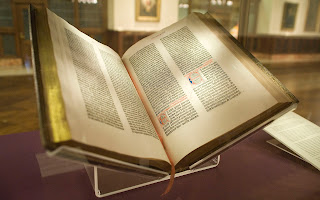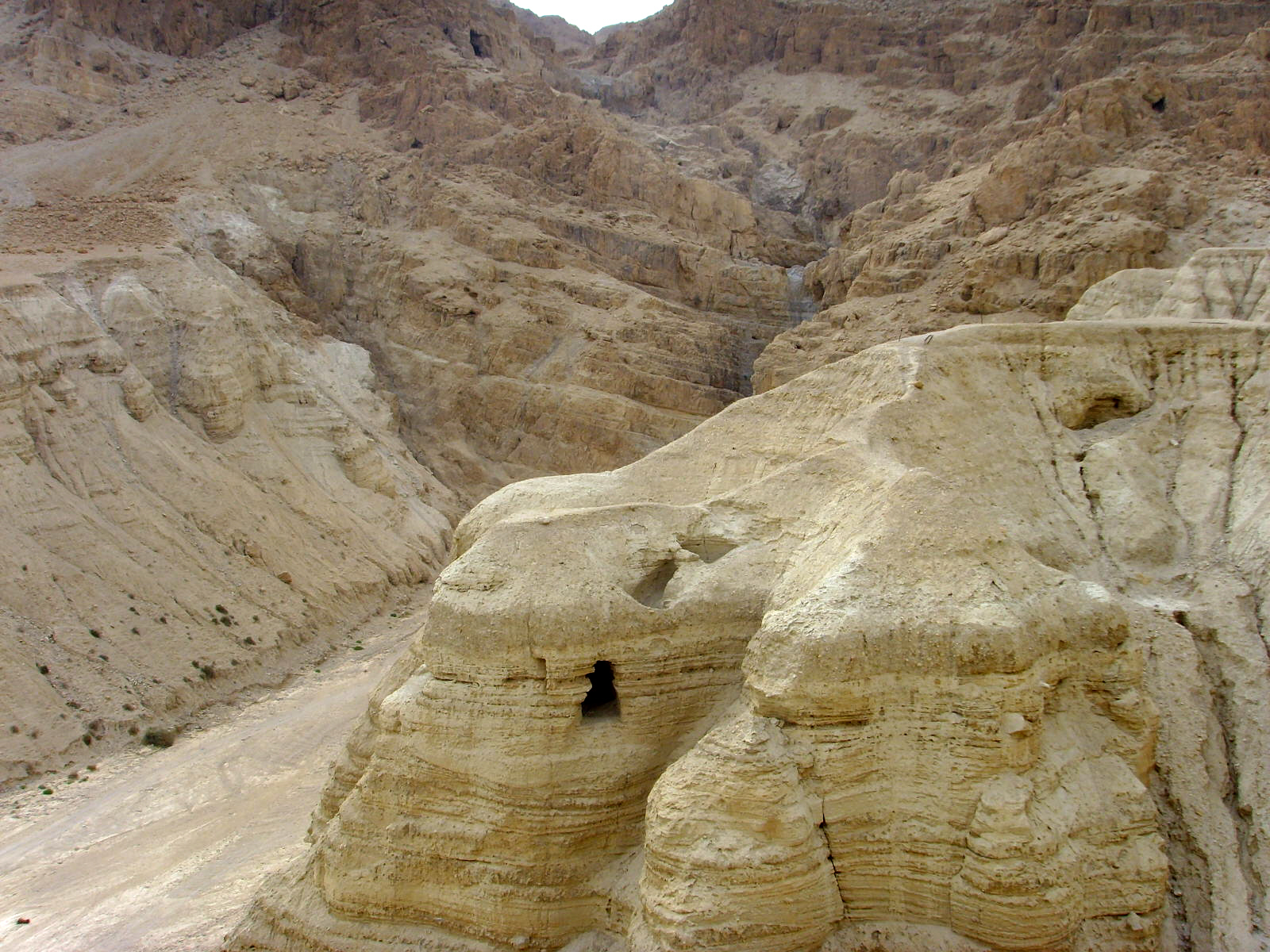SENIOR
AGE
GROUP: 14 - 15 YEARS
STANDARD
(GRADE): IX & X
Permission is granted only for
free distribution among Sunday School children.
No part of this document can be
modified, sold or used for any commercial purpose.
LESSON – 1
THE HOLY BIBLE – GOD’S PRICELESS TREASURE
What does the word “Bible” mean?
The Holy Bible, the most sacred book of the Christians is a collection of 66
books. The word "Bible" is not found in the Holy Bible. The Greek and
Latin word "Bible" is translated as "Books”. The
Greek words Biblion (Luke 4:17; 2 Timothy 4:13) and Biblos (Luke
3:4) are both translated "Book" or "Books". (1)
The Divine Author: The Holy Bible is different from all other books because its author is God Himself. In 2 Timothy 3:16 we learn that "All Scripture is given by inspiration of God”- The human authors were just tools to record these words uttered by God.
The human authors: The Holy Bible was written by more than forty different human authors who were inspired by the Holy Spirit of God over a period of about 1,500 years.
The uniqueness of the human authors:
What makes the human authors of the Holy Bible unique is the unity in message that is seen in spite of their diverse backgrounds. The backgrounds of these authors are surprisingly diverse. Example: Joshua (an Army Commander), David (a King), Daniel (a Royal Official), Paul (a Scholar), Luke (a Physician), Peter (a Fisherman), and Nehemiah (a Cupbearer).
The various books of the Holy Bible were also written in different places, such
as the Wilderness (Moses), Palace (Daniel), Prison (Paul), in Exile
(John).
The Biblical writings were composed from three different continents (Africa,
Asia, and Europe). The Bible was originally written in three different
languages which was prevalent during those times when each of these books were
written. The Old Testament was written in Hebrew and Aramaic, while the New
Testament was written in Koine Greek language. In spite of all these
differences, from the first verse of the first book to the last verse of the
last book, all these books are written around a single theme “Eternal Life or God’s
Redemption plan for mankind”.
|
OLD TESTAMENT |
NEW TESTAMENT |
|
|
Moses*: Pentateuch (Genesis to Deuteronomy)
and Job Joshua: The book of Joshua Samuel, Nathan and/or Gad: Judges, Ruth, 1 & 2 Samuel (Ref: I Chron 29:29,30) Jeremiah: 1 Kings and 2 Kings Ezra and Nehemiah: 1 & 2 Chronicles, Ezra and Nehemiah (Ref: Nehemiah 12:22,23) Mordecai: Esther David, Asaph, sons of Korah, Heman, Ethan, Solomon and Moses and others: Psalms Solomon: Proverbs, Ecclesiastes and Song of Songs. |
Isaiah: Isaiah Jeremiah: Jeremiah & Lamentations (Ref: II Chronicles 35:25) Ezekiel: Ezekiel Daniel: Daniel Hosea: Hosea Joel: Joel Amos: Amos Obadiah: Obadiah Jonah: Jonah Micah: Micah Nahum: Nahum Habakkuk: Habakkuk Zephaniah: Zephaniah Haggai: Haggai Zechariah: Zechariah Malachi*: Malachi |
Matthew: Matthew John Mark: Mark Luke: Luke and Acts (Ref: Luke 1:1-4; Acts 1:1,2) John: John Gospel, 1, 2 & 3 John, Revelation Paul: Romans, 1 & 2 Corinthians, Galatians, Ephesians, Philippians, Colossians, 1 & 2 Thessalonians, 1 & 2 Timothy, Titus and Philemon Paul / unknown author: Hebrews James, Jesus’ half-brother: James Peter: 1 Peter and 2 Peter Jude: Jude |
If men wrote it, then how can we say it is the Word of
God?"
We know that many men of God were moved by God to write the Holy Bible:
Moses, Paul, David etc. If men wrote the Holy Bible, how can we say that
it was written by God? According to 2 Peter 1:21, “All Scripture is given by
the inspiration of God”. The Holy Spirit inspired these men in such a way that they
recorded exactly what God wanted them to write. God the Divine Author used
these men as tools to record these words.
Example: Suppose a father wanted to convey an important message to
his son. But he wrote it using different writing instruments (pencil, pen, sketch).
The son would understand the exact information his father wanted to convey,
since the message would not change even though the writing instruments were
different.
God had ordained men from different
background men to be His writers, but the message uttered and inscribed by
these men was the exact message that God intended for them to convey to humanity.
Each book of the Holy Bible is different, since each of them wrote it according
to their unique skills and abilities, but they communicated the message of God
with complete precision. Fisherman Peter and a great scholar Paul did not have
any difference in their messages. In spite of the fact that the Holy Bible
was written over 15oo years, in different continents and settings, by more than
40 authors from diverse backgrounds, yet there is no discrepancy or
disconnectedness in the message they wanted to convey.
Every book of the Holy
Bible is woven around a single topic, "God's redemption plan for the
salvation of mankind." It cannot be refuted that during ancient times, the
more than 40 authors who were used by God to write the Holy Bible, could convey
this single unique message, only because of the inspiration of the Divine Author.
They did not have the privilege of the modern gadgets and communication
facilities and they were also separated from each other by time and space.
The Holy Bible is different from all other books because its author is God
himself.
Qumran Caves and the Dead Sea Scrolls:
The Dead Sea Scrolls is considered to be one of the chief archaeological findings of the 20th century. The Dead sea scrolls were found in a place called Qumran caves. They consist of scroll copies of Biblical and apocryphal literature, and other writings. Some of the oldest known manuscripts of the Holy Bible were found here. Qumran became famous in 1947, when a shepherd boy from Palestine named Mohammad al-Theeb discovered scrolls in a cave, which were later christened the “Dead Sea Scrolls”. (2)

Khirbet Qumran is located
on the western coast of the Dead Sea and around 20 km south of Jericho. These scrolls
are thought to be from the years between 2nd century BC to 68 AD. They give us
a glimpse into the life of the people of Biblical times and including the early
years of Christianity. The excavation has revealed sophisticated building
works, common facilities for community people, library etc. (2)
Memory Verse: All Scripture is given by inspiration of
God, and is profitable for doctrine, for reproof, for
correction, for instruction in righteousness, that the man of God may be
complete, thoroughly equipped for every good work. (2 Timothy
3:16,17 NKJV)
Foot Notes:
Moses*: Moses is considered as the author of the first five books of the Holy
Bible which are generally referred to as the Pentateuch which means “five
scrolls”. Moses lived between 1500 and 1300 BC, though he recollects incidents
such as the account of creation and the great flood which occurred before his
birth. These earliest accounts were handed down from generation to generation through
songs, narratives, and poetry (still we can find traces of these in folksongs,
folktales and ancient poetry). During the ancient times, writing systems were
not well developed and hence important events and occurrences were relayed from
generation to generation through oral accounts with great emphasis on detail
and accuracy. Some of the oldest writing systems began when symbols or pictures
were engraved on stones or pressed on clay tablets. The Egyptians mastered this
method and created the hieroglyphics, one of the earliest forms of writing. The
Holy Bible tells us that Moses who was brought up as the Prince of Egypt by the
Pharaoh's daughter was “Moses was learned in all the wisdom of the Egyptians”
(Acts 7:22), so he would have known the writing systems of the Egyptians. We
also read that God gave Moses “two tablets of the Testimony, the tablets of
stone written with the finger of God” (Exodus 31:18). Hence it is possible that
some of the earliest books of the Bible could have been written around 1400 BC. (3)
Malachi*: Prophet
Malachi, wrote the last book of the Old Testament around 450 BC. There was a
500-year gap between the Old and the New Testaments when there was no divine
inspiration and hence no writings of this period are available in the Holy
Bible. It was during this time that Alexander the Great conquered much of the
world and the Greek language was introduced to the Israelites. They began to
use it so much in their day to day life that the Hebrew language was replaced by
Greek and by another language, Aramaic, which was spoken in that area (2).
Reference:
1. Vine, W. E., Unger, M. F., White, W., & Vine, W. E. (1985). Vine's complete expository dictionary of Old and New Testament words. Nashville: Nelson.
2. Qumran: Caves and Monastery of the Dead Sea Scrolls (Retrieved 5th August 2020 from https://whc.unesco.org/en/tentativelists/5707/)
3. When was the Bible written? (Retrieved 5th August 2020 from https://www.biblica.com/resources/bible-faqs/when-was-the-bible-written/)
Click this link to get the next lesson - Senior Lesson 2 - The Holy Trinity or the Triune God
ASSESSMENT
ACTIVITY
I.
Fill in
the Blanks:
1. The Holy Bible was written by more than …………………….. human authors
2. The Biblical writings were
composed from …………………. different continents
3. The Holy
Bible was written over a period of about ……………….. years
4. The Dead sea scrolls were
found in a place called ………….............
II.
Give
short answers:
1. What does the word “Bible” mean?
2. Write about the backgrounds of some of the
human authors of the Holy Bible?
3. Write about the languages in which the Holy
Bible was written?
4.
How do we know that the authors of the Holy Bible were inspired by God?
III.
Give
brief answers:
1. Write in brief about the
Qumran caves and the Dead sea scrolls.






No comments:
Post a Comment